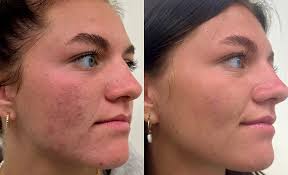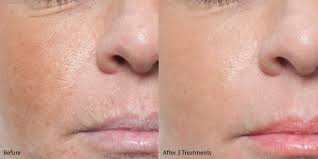Microneedling – Everything You Need to Know
- Daisy Whincup
- Apr 14
- 3 min read
Microneedling is a transformative treatment for achieving radiant, youthful skin. It’s your go-to solution for smoother, firmer, and healthier skin. This advanced procedure works deep within the skin, using a handheld device equipped with ultra-fine needles to create tiny, invisible channels. These micro-punctures stimulate the body’s natural healing process, promoting collagen and elastin production. Research shows that microneedling can increase collagen and elastin levels by up to 400% within just six months.

How Does Microneedling Work?
Microneedling involves using a device with fine needles to create controlled micro-injuries in the dermal layer of the skin. This intentional damage triggers the body’s wound-healing response, leading to the production of new collagen and elastin fibres. The skin's healing process occurs in three key phases:
Inflammatory Phase: Immediately after the skin is punctured, the body activates an immune response to heal the wounds. Increased blood flow begins the process of tissue regeneration.
Proliferative Phase: New tissue begins to form and repair the micro-injuries. This marks the rebuilding stage of the skin.
Remodelling Phase: As healing progresses, new dermal tissue and blood vessels develop. Collagen is realigned and strengthened, smoothing out scar tissue and improving the skin’s structure.
Benefits of Microneedling
Microneedling harnesses the body’s natural ability to regenerate, resulting in numerous improvements to the complexion. Here’s how this minimally invasive treatment can benefit your skin:
Smoother, Firmer SkinMicroneedling stimulates the production of collagen and elastin, the proteins that provide skin with firmness and elasticity. These structural elements give the skin a plumper, more youthful appearance, reducing the appearance of fine lines and wrinkles. Microneedling is also effective in combatting the volume loss that naturally occurs with age and is ideal for improving textural imperfections such as acne scarring.
Scar Reduction and Minimised PoresMicroneedling strengthens the skin surrounding the pores, providing better support and making them appear smaller and less noticeable. While it won’t completely eliminate pores, regular treatments can lead to significant visible improvements.
Before & After Microneedling sessions
Does Microneedling Hurt?
Discomfort levels can vary depending on factors such as needle length and individual pain tolerance. Microneedling devices come in different types and depths. At The Rejuvenate Clinic, your comfort is our priority. We apply a topical numbing cream before treatment and tailor your plan to suit your specific needs, adjusting the technique and pressure for a more comfortable experience.
Who Is Microneedling Suitable For?
Microneedling is a versatile treatment suitable for a range of skin concerns. However, it may not be recommended for individuals with active acne breakouts, eczema, rosacea flare-ups, or a compromised skin barrier. It’s important to address these conditions first before undergoing microneedling.
Post-Microneedling Aftercare
At The Rejuvenate Clinic, we’ll provide you with a personalised aftercare plan to support your skin’s healing process. Here’s what to expect:
First 3–4 Hours (Immediate Aftercare): Redness and mild sensitivity are completely normal, often compared to a mild sunburn. This usually subsides within a few hours. Avoid makeup and sun exposure during this time. Apply a broad-spectrum SPF 30 or higher and consider wearing a wide-brimmed hat if going outdoors.
First 24–48 Hours: Stick to a gentle skincare routine. Avoid harsh products and any activities that could irritate the skin, such as hot showers, saunas, or intense exercise. Continue to avoid sun exposure and refrain from swimming to prevent irritation from chlorine or saltwater.
First 5–7 Days: Your skin will continue to heal during this time. Maintain a gentle cleansing and moisturising routine, avoiding active ingredients such as retinoids, exfoliating acids, or vitamin C. You may notice mild flaking or peeling—resist the urge to pick at your skin. If needed, opt for lightweight, mineral-based makeup and always use clean brushes or sponges.
Potential Risks and Side Effects
While microneedling is generally safe and well-tolerated, like all cosmetic treatments, it carries some potential risks:
Common Side Effects:
Redness and Sensitivity: The most common side effect, resembling a mild sunburn, usually fades within a day or two.
Minor Swelling and Bruising: More common with deeper treatments; your practitioner will advise on how to manage this.
Mild Peeling or Flaking: A normal part of the healing process—keep your skin hydrated and avoid harsh products.
Have More Questions?
If you’d like more information or have any questions about microneedling, please don’t hesitate to get in touch. Contact us via phone, email, or social media—we’re always happy to help.
With love,
The Rejuvenate Clinic x


.png)


Comments